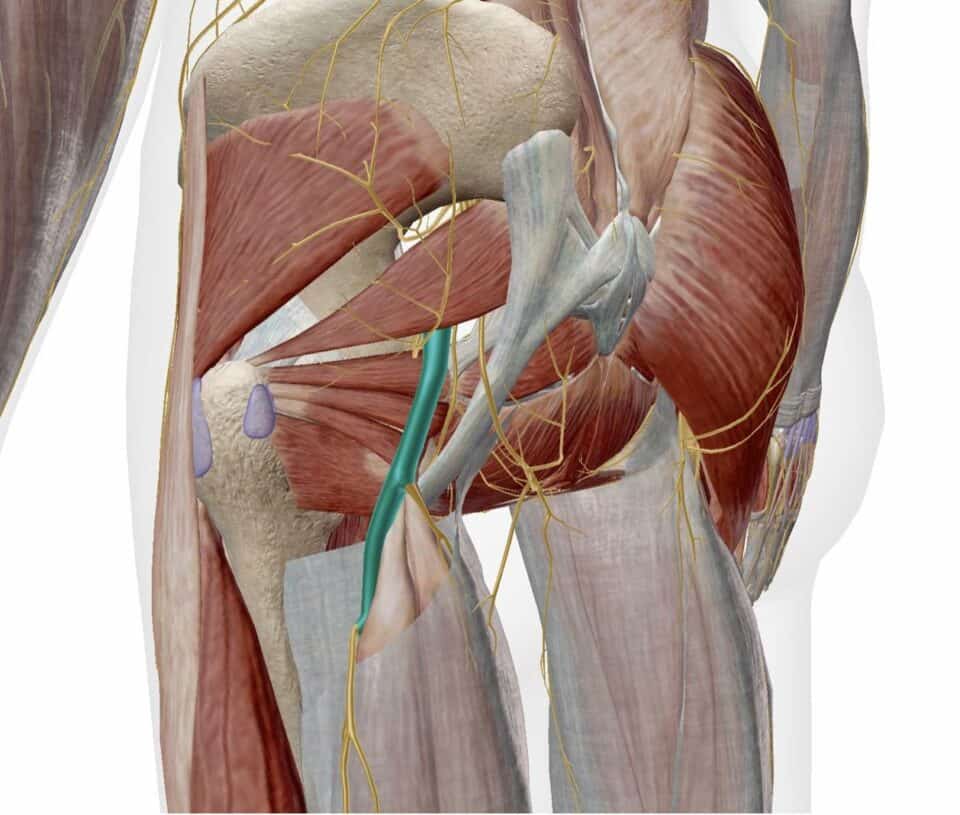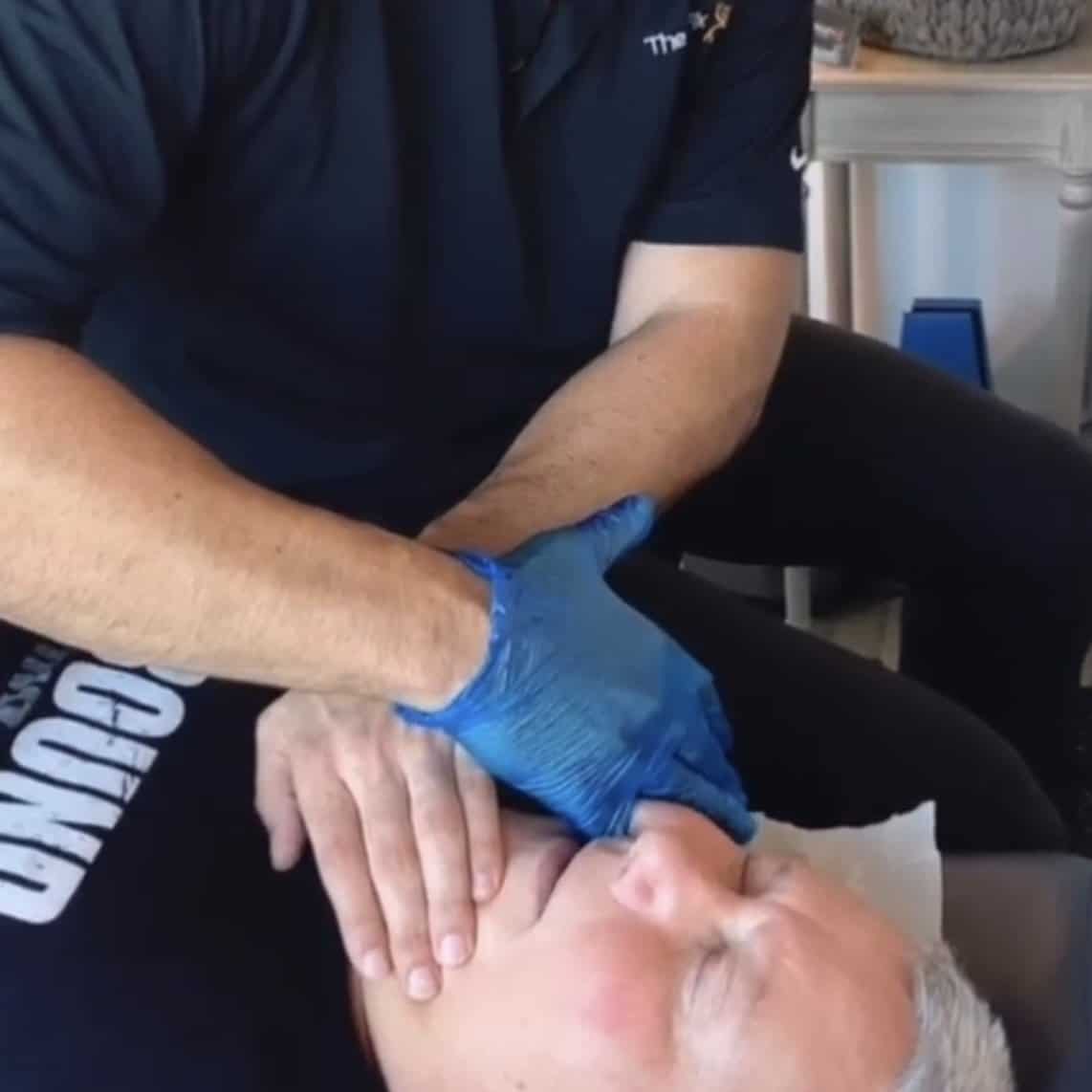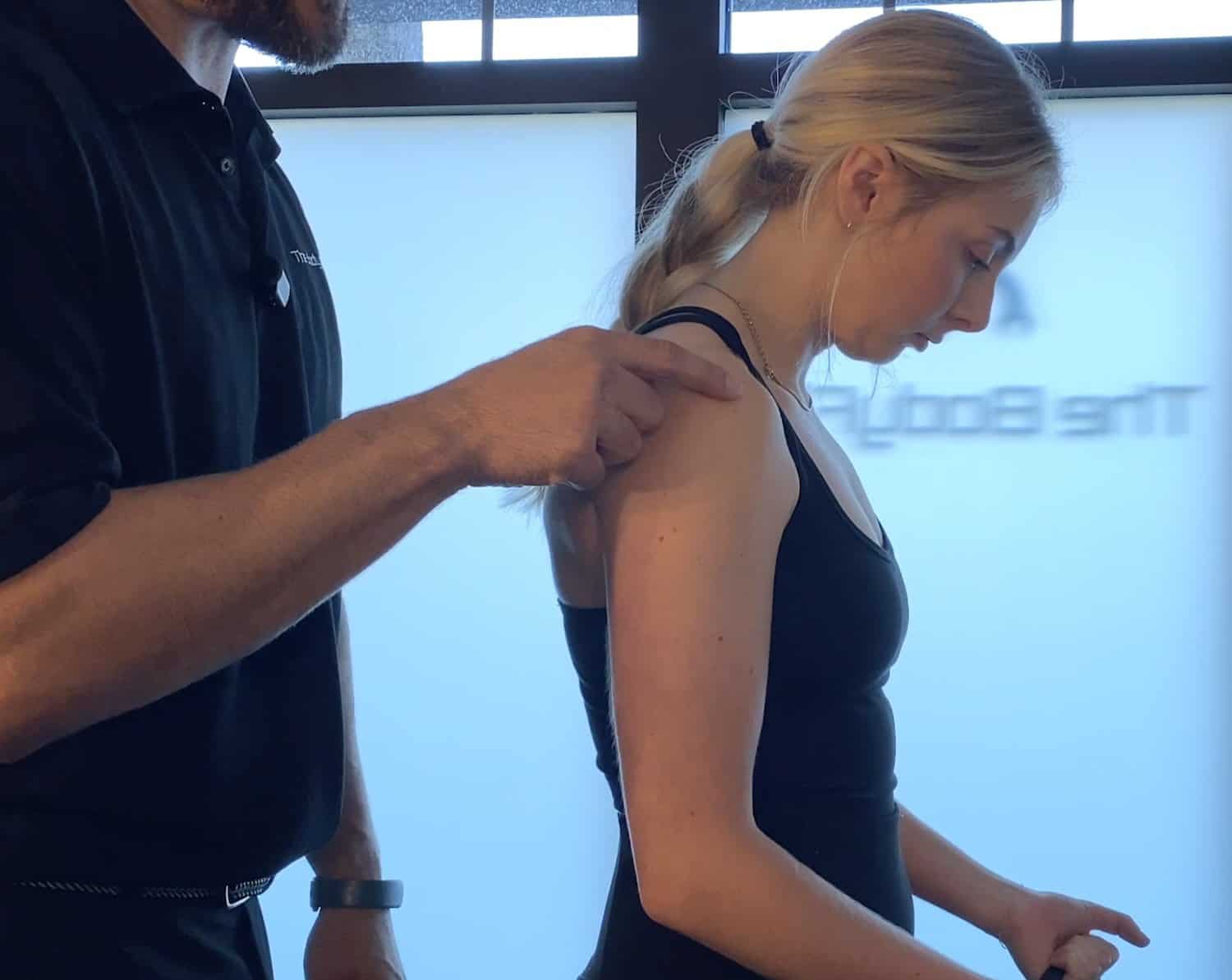Sciatica…. The most tossed-around term for general pain around the lower back and hips. Most Patients misunderstand what Sciatica is.
Common misrepresentations of Sciatica are shooting pain in the glute, numbness on the front of the thigh, Low back stiffness, and Shooting pain that starts in the front pelvis and goes down the side of the leg.
Too often these descriptions are used and patients will diagnose themselves as having “Sciatica.” But then you may ask…what TRULY is Sciatica? Let’s find out with some Anatomy first…
Table of Contents
- What exactly is Sciatica & the Sciatic Nerve?
- Common Areas where the Sciatic Nerve can become compressed:
What exactly is Sciatica & the Sciatic Nerve?
Sciatica refers to pain, weakness, numbness, and/or tingling that travels along the path of the sciatic nerve. The sciatic nerve travels from the lower back through the hips and buttocks and down each leg.
An alternate term used for Sciatica is “Neuropathy.”
The sciatic nerve is formed by several nerve roots that originate from the lumbar spine, specifically from the spinal nerves L4, L5, S1, S2, and S3. These nerves exit the spinal cord and converge to form two large branches: the tibial nerve and the common fibular nerve which make the sciatic nerve. The sciatica being the longest and thickest nerve in the body1 travels down the back of the leg from the depth of the hip and branches out to provide motor and sensory function to the muscles and skin of the lower extremities.
Sciatic nerve proper function is essential for normal movement and sensation of the legs and feet. The most common symptom of Sciatica is that pain starts from the hip and travels down the back of the leg into the toes. Discovering what is restricted/pinched, or “compressed” on a patient, is the key to proper treatment toward alleviation.2
Try to think of the Sciatic nerve as one big Freeway that could get traffic jams along the way. These traffic jams are “compressions” mostly found in the following locations…
Experience the BodyFix Difference
Experience the difference that patient-centric, whole-body chiropractic care can make. Discover how The BodyFix’s unique approach addresses not just your pain, but your overall wellness for lasting results.
Common Areas where the Sciatic Nerve can become compressed:
Lower back
The L4-S3 nerve roots exit through the lumbar spinal foramen. Foramen are basically holes that are formed by two adjacent vertebrae and these are where spinal nerves originate in close proximity to the central spinal cord. Disc herniations, degenerative arthritis, foramina stenosis, and central canal stenosis are common diagnoses that cause compression of these nerves at this location. It is assumed that most Sciatica problems come from here …but do they?
Piriformis and other rotator muscle group
In my nearly 10 years of practice, I have found that this location is the most common area of compression, causing Sciatic Pain. Deep below the gluteus maximus muscle, there are 5 smaller muscles that control mostly rotation of the hip bone but the piriformis muscle is the main one. The sciatic nerve will pass under the piriformis muscle and with a small population actually pierce through this muscle. Any shortening/tightening of this muscle will cause friction on the nerve which will cause inflammation.
If I were to adjust the spine and not correct the hip muscular issue, patients would have reoccurring symptoms for a long while. This is why I find it important to not only distract and adjust the spine but work the rotators of the hip for long-lasting results. Usually, patients should start to feel improvement after 1-2 visits.
Hamstrings
Nerve pain doesn’t always have to be numbness, tingling, or shooting all the time3. Sometimes it’s a local pain that a patient can’t figure out why they got it because they don’t remember any sort of trauma. Could even feel like a pulled muscle on the outer part of the hamstrings called the biceps femoris.
We find fewer nerve impingement issues at this location but it does happen. We have to make sure the sciatic nerve and the hamstrings are sliding properly near each other. If they collide and produce too much friction then inflammation will start and pain will increase.
So, all in all, the sciatic nerve can be a tricky nerve to treat due to its possible location of restriction4. The key to proper treatment of this nerve is the specific diagnosis performed at the initial examination of any clinic. If the diagnosis is Sciatica then the next follow-up question should be where is it getting impinged? Three locations that should be examined are the low back, hip, and outer hamstring.
We see a large number of patients with Sciatic Pain. AND… treating it with The BodyFix Method & a little Active Release Technique has shown us the best results!
But, we have your back… because at The BodyFix, Dr. Mario (myself) is certified in Active Release Technique and can treat Sciatica!
If you think you could be suffering from Sciatica, then try out Our New Patient Special at The BodyFix. We WILL help you get to the bottom of it!
Experience the BodyFix Difference
Experience the difference that patient-centric, whole-body chiropractic care can make. Discover how The BodyFix’s unique approach addresses not just your pain, but your overall wellness for lasting results.
Find out more information from our experts at The BodyFix. Or Book an Appointment with us today to start your healing journey! For more information, you can call us at 843-981-4500.
- https://my.clevelandclinic.org/health/body/21618-sciatic-nerve#:~:text=The%20sciatic%20nerve%20is%20the,nerve%20gets%20compressed%20or%20pinched. ↩︎
- https://pmc.ncbi.nlm.nih.gov/articles/PMC8567757/ ↩︎
- https://my.clevelandclinic.org/health/diseases/15833-neuropathic-pain ↩︎
- https://www.sciencedirect.com/topics/neuroscience/sciatic-nerve ↩︎
Blog Disclaimer: The information provided on The BodyFix Chiro blog is for general informational and educational purposes only and is not intended as medical advice. These articles reflect our opinions and experiences but should not be used to diagnose or treat any health conditions. Always consult with your physician, chiropractor, or other qualified healthcare provider before starting any new treatment, exercise program, or making changes to your health routine. Any actions you take based on information from this blog are entirely at your own risk, and The BodyFix Chiro and its contributors disclaim any liability for the decisions you make based on this information.



